With a whopping 1.03 million home invasions occurring every year in just the U.S. alone, there’s no reason you shouldn’t have a plan of action ready to utilize in case you become one of these unfortunate victims.
Lucky for you, there are steps you can take to not only be prepared for a home invasion but to potentially avoid the situation altogether. The best part? You don’t need specialized gear like a rifle equipped with the best 6.5 Creedmoor scope to survive a home invasion. Just a few adjustments around the house will do. So without further ado, here are 5 tactical tips to survive a home invasion.
1. Take Precautions to Prevent a Home Invasion
Your typical home invader is, luckily, anything but dogged. In fact, most home invaders are not looking to crawl, climb, and clamber through your house like they’re the next American ninja warrior. Home invaders are more like infants at the dinner table: immature and picky as hell.
Click here to get your guide to a layered survival defense!
These big, bad babies are on the lookout for the easiest of easy targets. What does that mean? It means you can merely make your home appear threatening and you’ll ward off most potential burglars. In fact:
Homes without security systems are 300% more likely to be broken into. That said, simply keeping your home well-lit is a major disincentive for criminals; and it’s not like those lights are tripwire bombs under the guise of lights—they’re just lights.
The point is that most home invaders are not going to stand outside in front of your house, meditate for an hour, weigh all the options, and then make a decision. They’re going to take one quick look at your house and make one quick decision. And if they see anything that’s even slightly deterring, they’re moving on to the next potential candidate.
Now, of course, your dog (real or fake) and a few LED lights aren’t going to fend off all home invaders. If you really want to feel safe and secure, you’re going to want to get a little more practical and pragmatic. Installations like security cameras, video doorbells that alert you when someone is at the door, motion sensor lighting, security window film, steel screws in place of your standard door hinges, and good locks are all going to stop or, at the very least, slow down the more steadfast robbers.
But what if these precautions still aren’t enough? Trust me when I say there will be desperate home invaders that will go through quite a bit of hell to gain access to your home and all of your possessions. What do you do once someone has gained entry to your house and is now a threat to you and your loved ones?
2. Have an Escape Plan
It is absolutely crucial to have a premeditated escape plan that all frequent residents of your home are not just familiar with but have memorized to the point of muscle memory. You want to get as far away from the home invader as possible (if possible), because you never know whether their intentions entail taking your material possessions or if they intend to do something more rash like harm you or your family.
You should have a code word that is to be called out in case of a home invasion; one that is not silly or the potential butt of a joke—there should be no joking around with this word.
If your home is bigger than the norm, you might have a couple different plans depending on where the intruder enters the building. However, the last thing you want to do is confuse yourself in the midst of an emergency. So if you find yourself confusing all of these plans with each other, just keep things simple and stick to one clear and simple plan.
One thing that should definitely be a part of your escape plan is a safe room.
3. Have a Safe Room
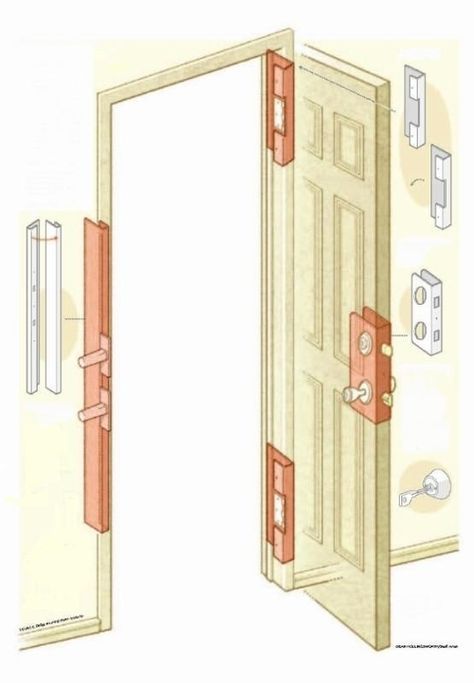
Your safe room should have a door with a deadbolt, as well as a heavy piece of furniture ready and available to blockade the door with. If you have a home defense firearm and know how to use it effectively, then your safe room should definitely contain one.
Before even thinking about fending off a home invader, however, you need to be thinking about actually escaping the premises so there’s no risk of possibly endangering you or your loved ones. Your safe room should have a window that you can escape out of if the coast is clear. If your home has a second story, your safe room should ideally be on that second story, as the window would be inaccessible to intruders.
If this is your situation, have a rope or a ladder stocked away in your safe room that enables you to get to the ground safely. If your home is a single-story, your safe room’s window should definitely be secure in the case of a home invader trying to gain access through this window. Your safe room’s window should also be covered by curtains or blinds, so as to not give away your hiding place.
No matter what though, when attempting to escape the building, make sure that the coast is 100% clear. You do not want to be vulnerable in a situation like this. After escaping, your next action should be to run to a designated neighbor’s house for safety.
Another thing a safe room should include is a phone—preferably an extra cheap cell phone, so the home invader can’t cut any phone wires. This leads us to our 4th tactical tip for surviving a home invasion.
4. Call/Text the Police
Once you’re in a safe and secure place, you need to call or text (in some situations) the police. The sooner you contact the police, the sooner you’ll not only be safe but have a better chance of catching the home invader as well.
This is where a cell phone over a landline comes in handy. With a cell phone, you’re almost assured the ability to get help, where with a landline there is always that possibility of wires getting cut.
5. Be Smart
If you’re a victim of a home invasion, don’t try to be a hero. Your life is more valuable than any worldly possession you could ever possibly own. You want to avoid confrontation at all costs, but if you do happen to be forced into confronting the home invader, first try to de-escalate the situation and follow their orders and commands.
Most of the time, the home invader doesn’t have any intention of harming anyone. However, if the invader is noticeably aggressive and violent, you need to fight back. Whatever you do, never leave with an intruder to another location. The reason? You’re very unlikely to make it out alive.
You can use intimidation factors to avoid confrontation such as a pump shotgun and/or a bull horn to tell home invaders that you have a gun and have called the police. Know when to use your firearm (if you have one and know how to use it), because when it comes down to it, you need to take action in order to keep yourself safe.
Wrapping it Up
And there you have it:
5 tactical tips to survive a home invasion. It’s very important to remember Murphy’s law that states that “whatever can go wrong, will go wrong.” A “take the odds” mentality can only get you so far before you become another “unlikely” statistic. Do yourself a favor, and be safe, not sorry.


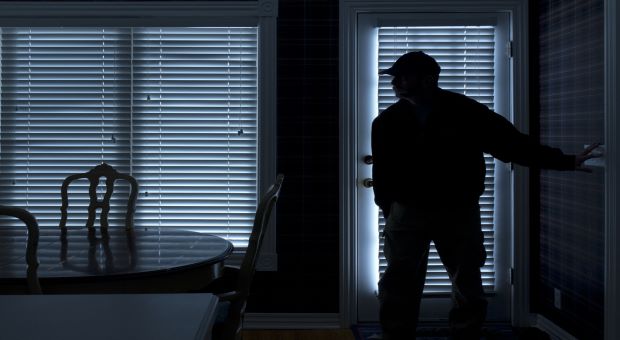


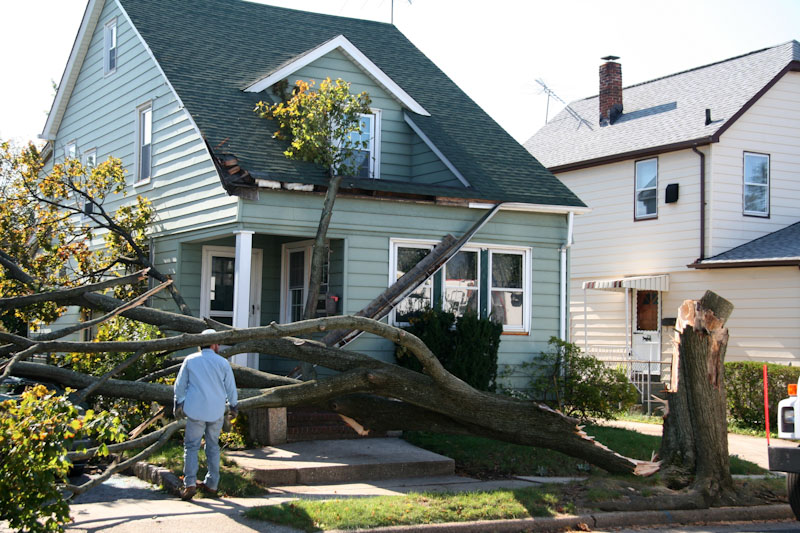

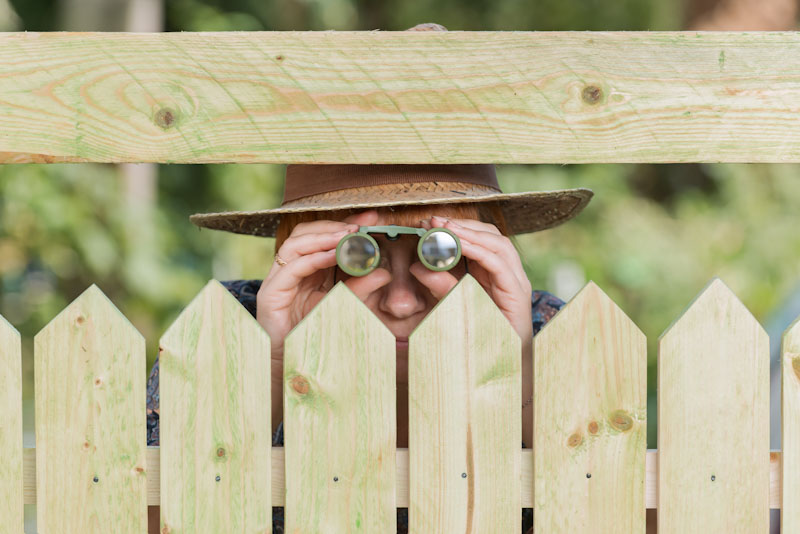
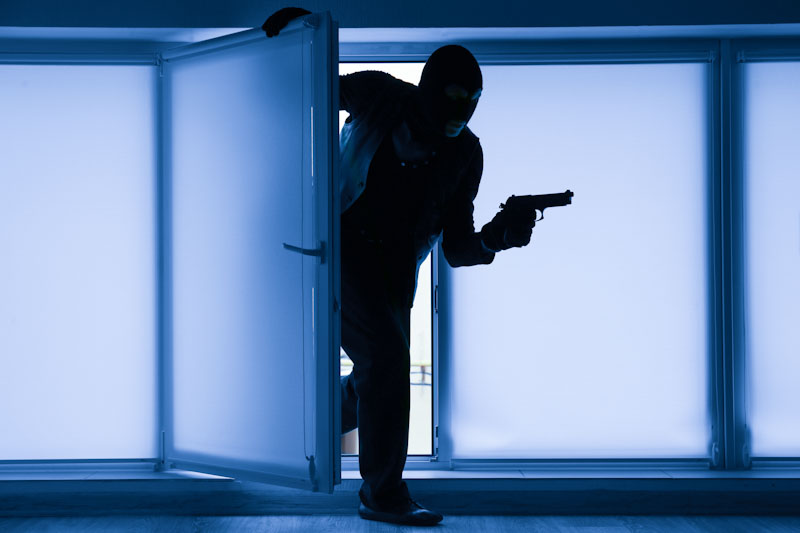

Pingback:Biggest Mistakes You Can Make in a Blackout – Spy Briefing | December 3, 2019
|
Brian Symons | January 30, 2020
|
We were on holidays in Tasmania & the unit we rented had me intrigued.
The bedroom had a really good lock & it was three-point locking with pins into the top door rail & the floor as well as the normal lock point.
The manager stated that it was a secure room in case of home invasion & detailed other security points.
That got me thinking when I got home.
Our bedroom was the hottest room in the house, so we needed air conditioning fitted.
All the plasterboard walls needed to be refinished so I decided to strip the walls down & fit insulation.
Since I was doing that, I would look at security & services upgrades.
Our bedroom had a sliding door – an obvious problem, as far as strong room security goes.
Our first upgrade was to get a solid timber door – thicker than usual & it overlaps the opening 3 or 4 inches at the top & at least six inches on the side opening.
The overlap really helped to reduce temperature loss, improve soundproofing, & prevent light getting around the side.
The overlaps really improved our bedroom for sleeping comfort.
I bought an industrial rated sliding door rail that has the wheels inside it & is rated for an insane weight.
It was designed for screws fixing upwards, so I also bought some L section steel.
I drilled the rail & steel at fairly close intervals & used large head screws to mount the rail to the L section steel.
I shortened the screws, so they were flush with the L section – 304 (A2) stainless screws are nice since they won’t rust & are cheap on eBay.
Filing the screws flush with the L section top makes the rail easy to wipe clean to remove dust.
I also drilled several holes for the L section to mount to the wall & used long large head roofing screws into the wall studs so it is extremely strong.
The door rail & L section were powder coated to make them pretty & easy to keep clean.
I didn’t bother getting a timber cover fitted to them, but you could for a further improvement in appearance.
If you do fit a cover then you need to allow for the end to be opened if you ever need to remove the wheel assembly to maintain or replace it.
The weak spot was then the part on the floor that fits inside a groove in the bottom of the door to make it run straight.
These are often a T shaped plastic with the T downwards & screws on each side, but an industrial rated item was L shaped plated steel.
Although nice & thick & strong, I think L shaped is a problem because it allows the side forces to lever the screws out of the floor & push it over.
I got two of the L shaped ones & asked the metal shop to spot weld them back to back to make a T shape.
The metal worker laughed at that & stated “do you have any idea how many T items I have fabricated for this purpose – I’ll be spot welding from now on!!!”
The lock that I fitted is for commercial sliding doors.
It is impossible for the lock to pull out when it operated because it has side plates that protrude into the rectangular recess in the door strike, as well as tongues that pivot out top & bottom.
Search for Lockwood 3573 Sliding Door Mortice Deadlocks if you wish to look to see what it looks like.
I am sure similar locks will be available all around the world.
I had heavy timber fitted on the strike side & the strike plate is held on by 6 long screws.
A few decent hits into the door tested it & proved that it will not budge.
I pulled the plasterboard down & fitted insulation for our air conditioner as well as upgraded cabling for power, light, network & security cables – since the wall was open.
The walls shared with interior rooms had plywood fitted screwed at close intervals & then the plasterboard fitted to make finishing easier.
The plywood prevents an intruder just smashing their way through.
I saw a business that the intruders had smashed through 5 walls to avoid the security system to steel cigarettes so smashing walls is not as hard as it may seem.
If the doors are not solid timber than It is easy to kick your way through them too.
The bedroom sliding door & exterior doors for our house received the boot test when I was getting rid of them.
All three of them were easy to smash through WITHOUT steel capped boots.
I don’t know how anyone can use such poor doors as exterior entrance doors, but they are common over here.
BTW, when we did up our bathroom, we also put ply behind the walls but that was for a different reason.
A guide for housing improvements for making your house good for older people suggested ply behind bathroom & toilet walls in case you ever need to add grab rails etc.
https://ilctas.asn.au/client-assets/info-sheets/Housing for Life booklet by Master Builders Association.pdf
Our tiler stated that he would collect the shipping ply from some of his suppliers & use that in his house (free ply) because he had to redo his bathroom because of some wall movement had caused cracking. He stated that with ply fitted it would never crack.
We got them to screw the plywood at close intervals & fit “cyclone bolts” that hold down the walls to the interior walls as well so that our bathroom is also a cyclone storm refuge.
Thanks,
Brian.
Victor Axelsen | March 14, 2020
|
Excellent article. It is very interesting to read. I really love to read such a nice article.
Thanks! keep rocking. I am looking for best 17 hmr rifle scope
Scott Strong | April 24, 2020
|
One thing I’ve noticed is why are residential entry doors not made to open outward like commercial doors are? It would make getting out of a burning/smoking house easier and would increase the strength of the door, jam/frame if someone is trying to kick it in. Same for a “safe room” door.
Anonomous | October 6, 2020
|
If you are law enforcement, it is “easier” to kick in or battering ram a door swinging in, than out. However, a door swinging out has the hinge pins outside, (screwdriver & hammer) as well as the clearance between the door and jamn (crowbar) as tooled means of access. Use security doors & hardware.
John | October 6, 2020
|
I was told by a very reputable contractor that the reason residential doors open inward was in case something was either placed against the door by someone trying to keep the inhabitants from escaping the resident, or debris could be blown against the door keeping it from opening.
Charles Drummond | October 6, 2020
|
In areas with snow, or flooding, a door that opens out can lock you in. This could be true if you have a porch roof that could have the outer edge supports fail in a storm and let the roof fall down and lock you in..
John | July 19, 2020
|
Totally agree with the article. I have a big house, big yard, flood ligths and security systems in place. But I don’t feel safe unless I have my guns near me (I have a gun safe under my bed, that I found in here. Last year we had an entry attempt and I promptly got my gun. Everything was ended with a warning shot but the experience was very frightening.
Charles Drummond | October 6, 2020
|
Having your guns under your bed may cause you a problem if your intruder is at the bedroom door. A gun you can reach from a sleeping position might give you a few more seconds to get out of bed. At least one gun on the head board would be faster and you may want a rifle fairly close if you get into a gun fight with more than one intruder (more likely).
Farmer | January 31, 2021
|
Never fire a warning shot. If you pull your weapon, it is only to use it to stop the threat. Warning shots have gotten people arrested. The only warning you need to give when a criminal enters your house is two to center body mass.
Phantom30 | November 24, 2020
|
This article is one day short of a year old. Here are five points to defend home and family:
Never think you know it all
Never allow yourself to be disarmed physically of spiritually
Never get on the bus (surrender to the world system)
Never stop improving you situation
Never quit
ALWAYS seek His face, Hear His voice and Obey His will
His will involves prudence: knowing what to do like the men of Issachar
Surveillance is the key to home defense. Motion detectors and lighting, Once alerted then
BAT FD-12 magazine fed 28″ bullpup semi-auto shotgun with situation dependent ammo.
Backed up by your CCW pistol QED
Fabian O. | July 8, 2021
|
Have a cell phone, but know the invaders can have a signal blocking/jamming device (it happened here).
If you’re building a safe room you should have a land line going out and through the street to another underground connection, so no one can cut it off, at least not easily.
I’ve projected and built safe houses, rooms and bunkers and always plan the communication so as to be failure-proof because it’s critical. Alarms and monitoring systems also work based on external communication and if it’s a weak link, all the rest may be to naught.
It’s cheap and not too complex but requires planning and careful execution. Always have a backup.